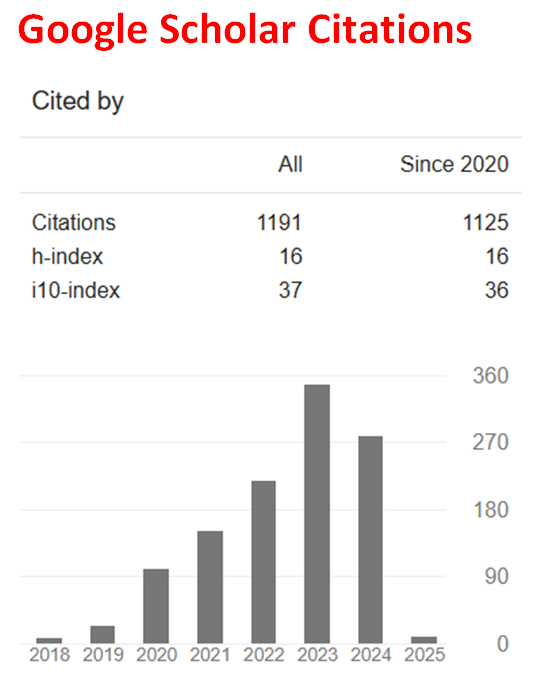Forecasting Method for Optimal Diversification
Abstract
Forecasting is a technique that uses historical data as inputs to make estimates that are predictive in determining the direction of future trends. The goal of investors is to make optimal choice that leads to minimization of risk and maximization of returns, but the method that leads to these objectives has been a challenge for investor. In this study, Black-Litterman model (BLM) is adopted and two forecasting methods; EGARCH and GARCH methods are used for two parameters of BLM; investor views and level of uncertainty. The aim of this paper is to investigate the best forecasting method to estimate BLM that would lead to minimum risk and maximum returns. The analysis of this paper shows that EGARCH method gives maximum expected returns and minimum risk.
Downloads
References
Candelon, B., Fuerst, F., & Hasse, J. (2021). Diversification potential in real estate portfolio. Journal of International Economics, 166, 126-139. https://doi.org/10.1016/j.inteco.2021.04.001
Fernandes, B., Street, A., Fernandes, C., & Valladao, D. (2018). On an adaptive Black- Litterman investment strategy using conditional fundamentalist information: A Brazilian case study. Finance Research Letters, 27, 201-207. https://doi.org/10.1016/j.frl.2018.03.006
Jayeola, D., & Ismail, Z. (2018). Impacts of riskless assets on diversification. Advance Science Letters, 24(6), 4286-4289. https://doi.org/10.1166/asl.2018.11590
Davis, M. H., & Lleo, S. (2016). A simple procedure for combining expert opinion with statistical estimates to achieve superior portfolio performance. The Journal of Portfolio Management, 42(4), 49-58. https://doi.org/10.3905/jpm.2016.42.4.049
Platanakis, E., & Urquhart, A. (2019). Portfolio management with cryptocurrencies: The role of estimating risk. Economics Letters, 177(1), 76-80. https://doi.org/10.1016/j.econlet.2019.01.019
Oikonomou, I., Platanakis, E., & Sutaliffe, C. (2018). Socially responsible investment portfolio: Does the optimization process matter? The British Accounting Review, 50(4), 139-401. https://doi.org/10.1016/j.bar.2017.10.003
Ince, H., & Trafalis, T. B. (2017). A hybrid forecasting model for stock market prediction. Economic Computation and Economic Cybernetics Studies and Research, 21, 263-280.
Bayram, K., Abdullah, A., & Meera, A. K. (2018). Identifying the optimal level of gold as a reserve asset using Black-Litterman model: The case for Malaysia, Turkey, KSA and Pakistan. International Journal of Islamic and Middle Eastern Finance and Management, 11(3), 334-356. https://doi.org/10.1108/IMEFM-06-2017-0142
Kara, M., Ulucan, A., & Atici, K. B. (2019). A hybrid approach for generating investor views in Black-Litterman model. Expert Systems with Applications, 128, 256-270. https://doi.org/10.1016/j.eswa.2019.03.041
Harris, R. D., Stoja, E., & Tan, L. (2017). The dynamic Black-Litterman approach to asset allocation. European Journal of Operational Research, 259(3), 1085-1096. https://doi.org/10.1016/j.ejor.2016.11.045
Takapoui, R., Moehle, N., Boyd, S., & Bemporad, A. (2017). A simple effective heuristic for embedded mixed-integer quadratic programming. International Journal of Control, 79(13), 1-11. https://doi.org/10.1080/00207179.2017.1316016
Yanagihara, H., Kamo, K., Imori, S., & Yamamura, M. (2020). A study on the bias-correction effect of the AIC for selecting variables in normal multivariate linear regression models under model misspecification. REVSTAT-Statistical Journal, 15(3), 299-332. https://doi.org/10.57805/revstat.v15i3.214
Jayeola, D., Aye, O. P., & Oyewola, D. O. (2022). Comparison of stationarity on Ljung-Box test statistics for forecasting. Earthline Journal of Mathematical Sciences, 8(2), 325-336. https://doi.org/10.34198/ejms.8222.325336

This work is licensed under a Creative Commons Attribution 4.0 International License.
.jpg)

